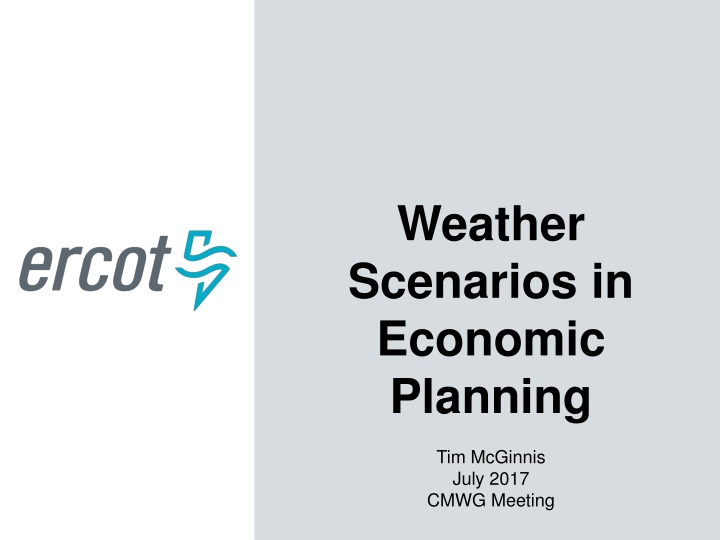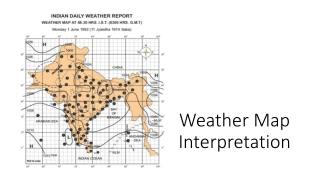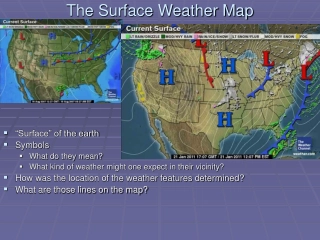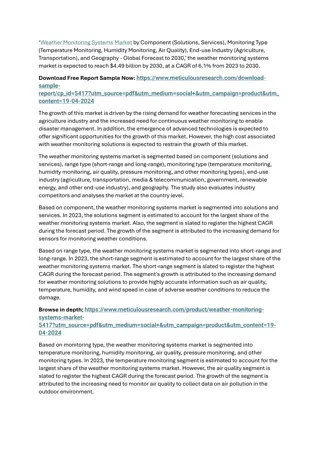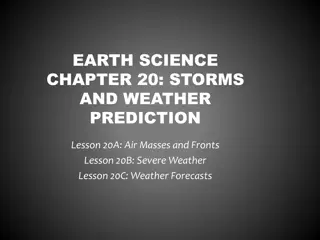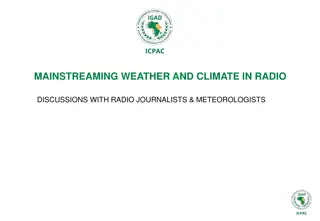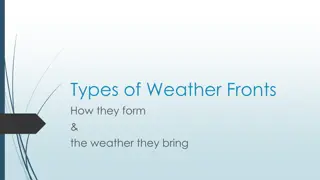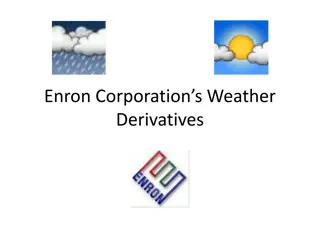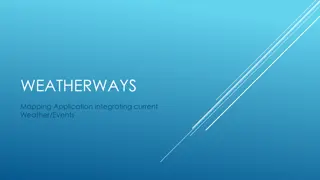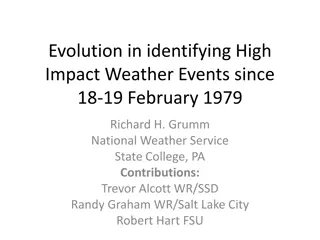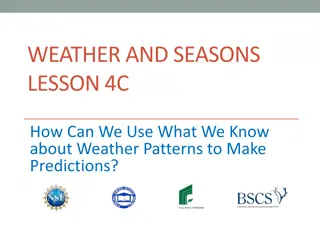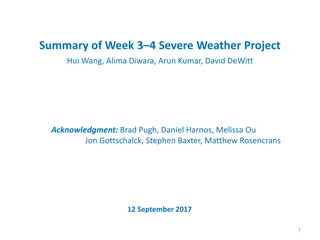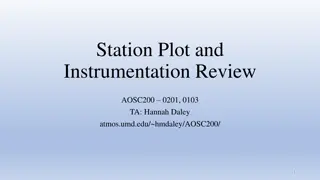Weather Scenarios in Economic Planning
Explore the impact of weather scenarios on economic planning in the energy sector, as discussed in a study presented at the CMWG Meeting. The study delves into utilizing different weather data to analyze production cost savings and capital cost ratios for economic projects.
Download Presentation

Please find below an Image/Link to download the presentation.
The content on the website is provided AS IS for your information and personal use only. It may not be sold, licensed, or shared on other websites without obtaining consent from the author.If you encounter any issues during the download, it is possible that the publisher has removed the file from their server.
You are allowed to download the files provided on this website for personal or commercial use, subject to the condition that they are used lawfully. All files are the property of their respective owners.
The content on the website is provided AS IS for your information and personal use only. It may not be sold, licensed, or shared on other websites without obtaining consent from the author.
E N D
Presentation Transcript
Weather Scenarios in Economic Planning Tim McGinnis July 2017 CMWG Meeting
Agenda Background Proof of Concept Study Latest Forecasted Input Data Next Steps Comments/Questions 2 PUBLIC
Background The Brattle Group prepared for ERCOT, Recommendations for Enhancing ERCOT s Long-Term Transmission Planning Process, in October, 2013 Among the recommended improvements, one involved the use of weather-related load fluctuations Perform economic analyses using varying load totals and hourly profiles to help capture the full range of value of transmission investments Load in Economic Models Current Process Enhanced Process 2019 2022 PUBLIC
Proof of Concept Study Developed a 2021 economic model based on 2015 RTP topology and updated with 2016 generation database Used peak loads, demand energy, and wind and solar generation that are forecasted if 2003, 2004, and 2006 weather occur again in 2021 2003, 2004, and 2006 weather scenarios were selected to have a range of values in the input data For each economic project tested, found the 2021 production cost savings to capital cost ratio for three weather scenarios and averaged the results PUBLIC
Proof of Concept Study Inputs and Results 2021 Input Data 2021 Results Top 10 Constraints Ranked by Average Shadow Price ($/MWh) PUBLIC
2021 Economic Analysis Results for Two Projects For projects requiring Savings/Capital Cost 0.15 Current Process Updated Process Tier 4 Project Example Tier 1 Project Example PUBLIC
Selection of Weather Scenarios Compiled forecasted input data Selected three weather scenarios that provided a range of values in the input data Avoided outliers in terms of demand energy (2011, 2004) Reviewed selection of weather scenarios with stakeholders PUBLIC
Latest Forecasted Input Data Goal is to better reflect future conditions by choosing more than one weather scenario 2010 Ranks Demand: #2 Peak Load:#4 Wind CF: #3 Solar CF: #2 2009 Ranks Demand: #6 Peak Load:#7 Wind CF: #6 Solar CF: #8 2007 Ranks Demand: #12 Peak Load:#9 Wind CF: #13 Solar CF: #9 PUBLIC
Next Steps Obtain stakeholder feedback Build economic models with input data for three weather scenarios Start using weather scenarios as needed per study scopes for RTP and RPG Project Reviews PUBLIC
Comments/Questions PUBLIC
Appendix: Additional Information and Data PUBLIC
Protocol Section 3.11.2 (5) To determine the societal benefit of a proposed project, the revenue requirement of the capital cost of the project is compared to the expected savings in system production costs resulting from the project over the expected life of the project. Indirect benefits and costs associated with the project should be considered as well, where appropriate. The current set of financial assumptions upon which the revenue requirement calculations is based will be reviewed annually, updated as necessary by ERCOT, and posted on the Market Information System (MIS) Secure Area. The expected production costs are based on a chronological simulation of the security-constrained unit commitment and economic dispatch of the generators connected to the ERCOT Transmission Grid to serve the expected ERCOT System Load over the planning horizon. This market simulation is intended to provide a reasonable representation of how the ERCOT System is expected to be operated over the simulated time period. From a practical standpoint, it is not feasible to perform this production cost simulation for the entire 30 to 40 year expected life of the project. Therefore, the production costs are projected over the period for which a simulation is feasible and a qualitative assessment is made of whether the factors driving the production cost savings due to the project can reasonably be expected to continue. If so, the levelized ERCOT-wide annual production cost savings over the period for which the simulation is feasible is calculated and compared to the first year annual revenue requirement of the transmission project. If this production cost savings equals or exceeds this annual revenue requirement for the project, the project is economic from a societal perspective and will be recommended. PUBLIC
Recommendations for Enhancing ERCOTs Long-Term Transmission Planning Process, p. 35 Source: Recommendations for enhancing ERCOT s Long-term Transmission Planning Process, The Brattle Group http://www.brattle.com/system/publications/pdfs/000/004/964/original/Recommendations_for_Enhancing_ERCOT%E2%80% 99s_Long-Term_Transmission_Planning_Process.pdf?1386013201 13 PUBLIC
